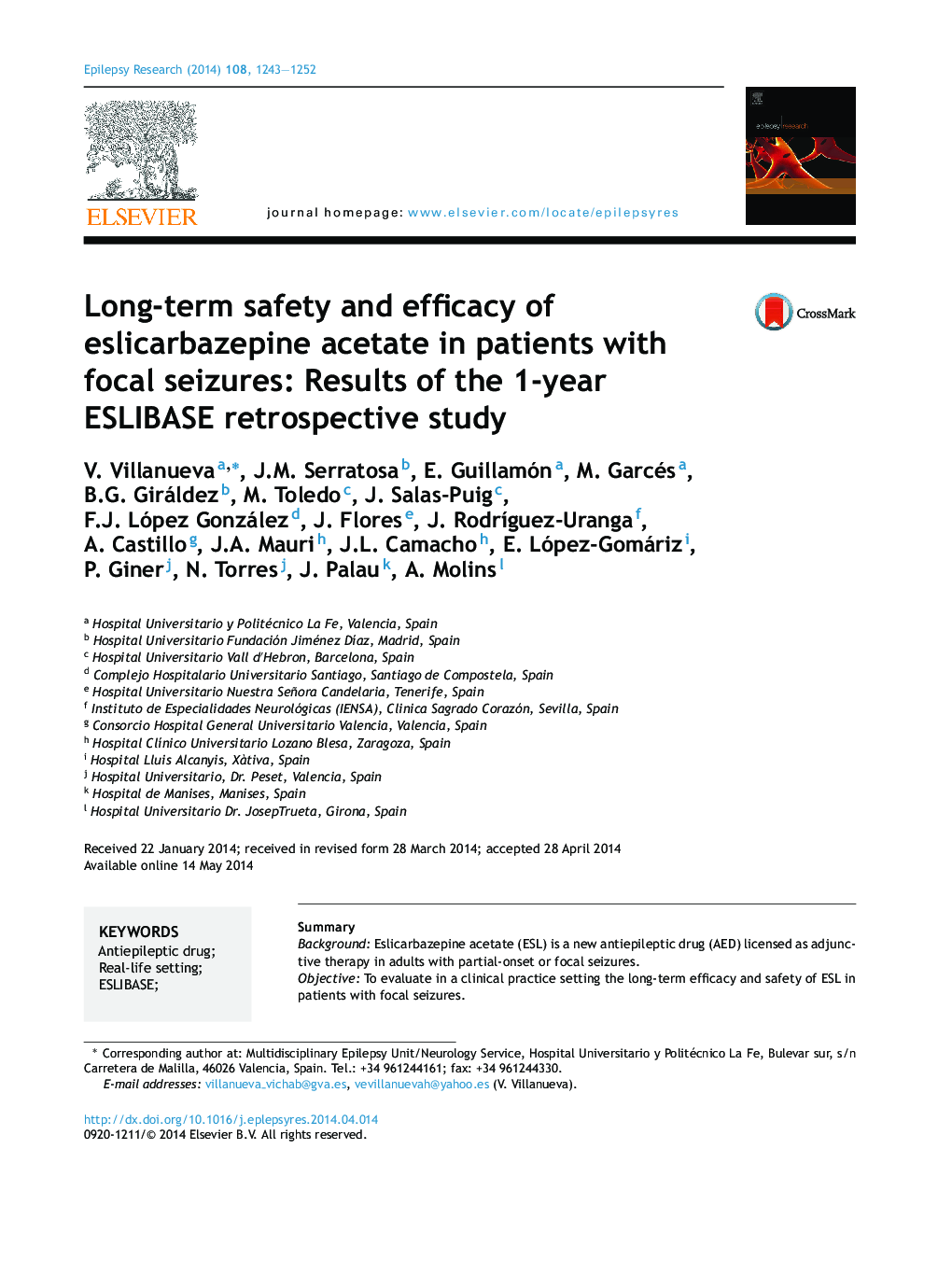| کد مقاله | کد نشریه | سال انتشار | مقاله انگلیسی | نسخه تمام متن |
|---|---|---|---|---|
| 3052047 | 1186072 | 2014 | 10 صفحه PDF | دانلود رایگان |

• We evaluated eslicarbazepine acetate (ESL) in a clinical practice setting.
• Three hundred and twenty-seven patients with poor seizure control or adverse events with other antiepileptics.
• Long-term ESL was well tolerated and effective in a real-world setting.
• The side-effect profile improved with respect to carbamazepine or oxcarbazepine.
SummaryBackgroundEslicarbazepine acetate (ESL) is a new antiepileptic drug (AED) licensed as adjunctive therapy in adults with partial-onset or focal seizures.ObjectiveTo evaluate in a clinical practice setting the long-term efficacy and safety of ESL in patients with focal seizures.MethodsESLIBASE was a retrospective study that included all patients with focal seizures who started ESL between January 2010 and July 2012 at 12 hospitals. ESL was prescribed individually according to real-life practice. Efficacy and safety were evaluated over 1 year. Switching from carbamazepine (CBZ) and oxcarbazepine (OXC) was assessed.ResultsThree hundred and twenty-seven patients were included; 78% of patients were taking ≥2 other AEDs at baseline. Most (87%) began ESL because of poor seizure control and13% because of adverse events (AEs) with CBZ or OXC. After 1 year, 237 patients (72.4%) remained on ESL. At 3, 6 and 12 months, the responder rate was 46.3%, 57.9%, and 52.5%, and 21.0%, 28.0%, and 25.3% of patients were seizure free. The responder rate significantly increased when ESL was combined with a non-sodium channel-targeting drug (non-SC drug) (66.7%) versus an SC drug (47.7%; p < 0.001). At 12 months, 40.7% of patients had ≥1 AE; AEs led to treatment discontinuation in 16.2%. Dizziness, nausea, and somnolence were the most common AEs. The tolerability profile improved in >50% of the patients who switched from CBZ or OXC to ESL because of AEs.ConclusionsESL was well tolerated and effective in a real-world setting over 1 year. Side-effect profile improved when OXC and CBZ recipients were switched to ESL.
Journal: Epilepsy Research - Volume 108, Issue 7, September 2014, Pages 1243–1252